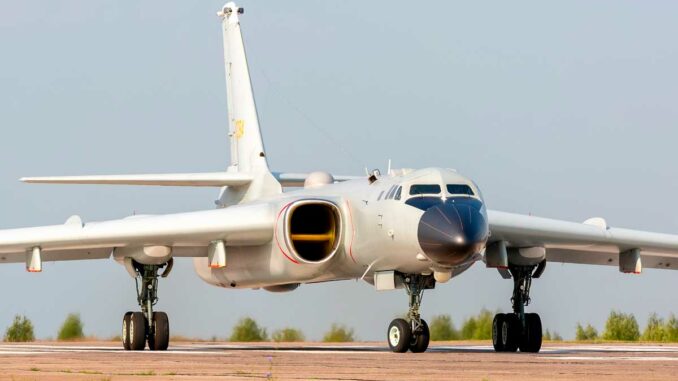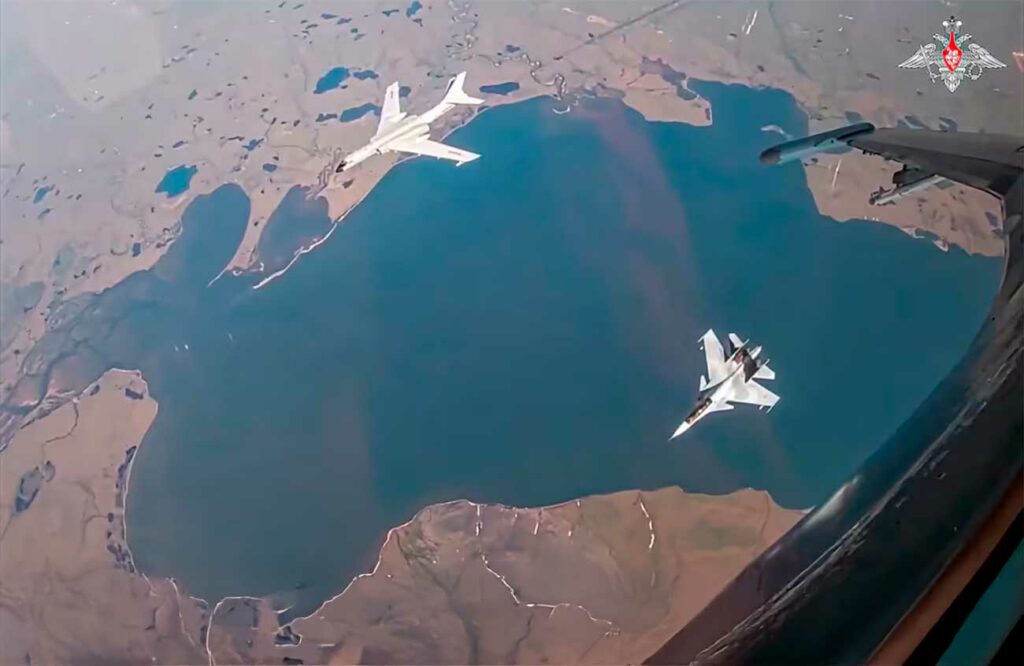
Detailed analysis of joint flights by Chinese and Russian bombers near Alaska in 2024: capabilities, motivations, and strategic implications.
The shock of July 2024: when China approaches the United States
The summer of 2024 marked an unprecedented milestone in contemporary military history. For the first time, Chinese H-6K bombers, accompanied by Russian Tu-95MS aircraft, entered Alaska’s Air Defense Identification Zone (ADIZ). Although they did not enter US sovereign airspace, the intrusion was enough to trigger an immediate response from the US Air Force and the Canadian Air Force, which scrambled fighter jets to escort the aircraft.
These flights were not isolated incidents. They are part of a series of joint Chinese-Russian patrols that began in 2019 over the Sea of Japan and the East China Sea. But the appearance of these bombers in close proximity to US territory has changed the strategic perception: China is now capable of projecting its air power thousands of kilometers from its bases.

A clear military objective: to complete the nuclear triad
The role of bombers in deterrence
For decades, China has been developing a nuclear triad comparable to that of the United States and Russia: intercontinental ballistic missiles (ICBMs), nuclear-powered ballistic missile submarines (SSBNs), and strategic bombers. Until recently, aviation was the weak link in this triad. The H-6s, inspired by the Soviet Tu-16 bomber, remained limited in range and capabilities.
With the introduction of the H-6N, the situation has changed. This version, which entered service in 2019, has an in-flight refueling system, increased range (6,000 km) and can carry new strategic weapons. It is designed to carry the KD-21 missile, a long-range cruise missile with an estimated range of 1,300 to 1,500 km, capable of carrying a nuclear or conventional warhead. Some analysts even mention the future integration of an airborne hypersonic missile.
Full-scale training
The approach of the H-6Ns to Alaska should not be seen solely as a symbolic gesture. It is also an operational exercise to test the Chinese Air Force’s (PLAAF) ability to conduct long-range missions, coordinate a coalition flight with Russia, and simulate strategic strike scenarios against US targets.
A political dimension: sending a message to Washington and its allies
A warning about nuclear sharing
Beijing is increasingly concerned about the possibility of nuclear sharing in Asia, modeled on NATO in Europe. The idea that the US could deploy nuclear weapons in South Korea or Japan alarms China. The flights near Alaska can therefore be interpreted as a demonstration of capability aimed at reminding the US that China now has credible airborne delivery systems for strategic strikes.
Cooperation with Moscow
The joint presence of Russian Tu-95 bombers in these patrols adds another dimension. Beijing and Moscow are showing that they are capable of supporting coordinated operations against Washington. Although this alliance is primarily pragmatic, it increases pressure on US defenses in the Pacific.
Next missions: towards Guam and beyond
After the Alaska flight in July, other patrols took place a few months later, notably over the East China Sea and in the western Pacific. On November 30, 2024, a group of H-6Ns was detected near Guam, a major US strategic base. This time, the bombers were within range of their KD-21 missiles, which is equivalent to a simulated nuclear attack on a key US facility.
Guam is home not only to US B-1 and B-52 bombers but also to submarines and missile defense systems. The presence of Chinese bombers within credible firing range was seen by analysts as a significant strategic signal.
What this means for US defense
An expanded threat
Until now, China has posed an air threat that was mainly concentrated in the Asia-Pacific region. Now, the possibility of joint strategic flights to Alaska or the central Pacific forces the US to consider a much broader air front.
An impact on NORAD
The North American Aerospace Defense Command (NORAD) must now continuously monitor not only Russian bombers coming from Siberia but also Chinese aircraft operating from Russian bases. This means increased radar surveillance, more air patrols, and even closer coordination with Canada.
A strategic cost for Beijing
However, these missions are costly in terms of logistics, flight hours, and media exposure. Beijing could therefore limit them in time to maximize their political effect while preserving its fleet.
Implications for regional allies
Japan and South Korea
The joint flights over the Sea of Japan between 2019 and 2023 had already caused concern in Tokyo and Seoul. The extension of these patrols to Alaska and Guam reinforces the perception that China and Russia will coordinate their forces to challenge US alliances.
Australia and India
For Canberra, which is involved in the AUKUS alliance, these demonstrations are a reminder of the vulnerability of its forward bases in the Pacific. For India, a partner in the Quad, they highlight the growing strategic proximity between Moscow and Beijing, which complicates its diplomatic balancing act.
What Beijing is really after
It would be naive to believe that these flights are merely media provocations. China has three clear objectives:
- To legitimize its nuclear bombers as a pillar of its triad.
- To test its operational capabilities over long distances and in cooperation with Russia.
- Send a deterrent signal to the US and its allies, particularly against any attempt to introduce US nuclear weapons into Asia.

Towards regular patrols?
Since early 2025, no similar missions have been reported. This freeze appears to be linked to the political context: Beijing is seeking to avoid direct confrontation while its trade relations with Washington remain tense. But there is no indication that these flights will not resume. Once China feels it has achieved its diplomatic objectives or that dialogue has failed, it is likely that regular patrols, perhaps even without Russian participation, will reappear.
A signal that goes beyond a demonstration
The appearance of Chinese bombers near Alaska marks a turning point in the perception of threats. Beijing is not just seeking to provoke Washington: it is testing long-range war scenarios, perfecting the use of its strategic bombers, and preparing its nuclear defense on a concrete basis.
For the United States and its allies, this development requires strengthening missile defenses in the Pacific, increasing joint training, and rethinking the balance of deterrence.
What the events of 2024 reveal above all is that China has crossed a threshold: its bombers are no longer merely a symbolic tool, but have become a credible strategic asset in global confrontation.
War Wings Daily is an independant magazine.